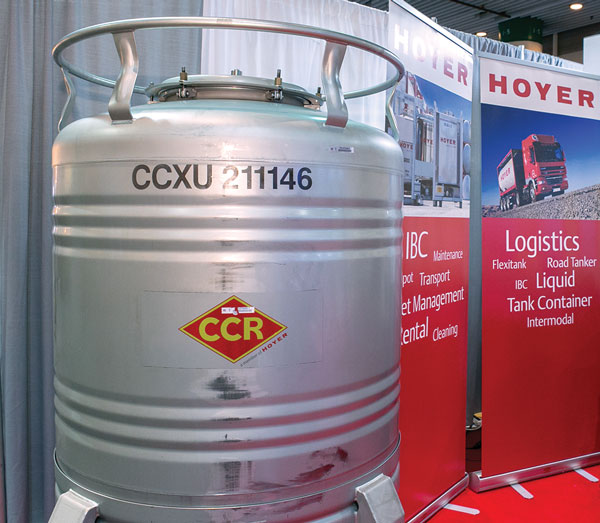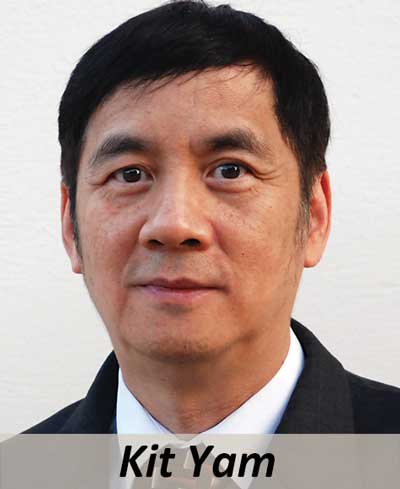
At IFT19 Packaging Was a Hot Topic
Packaging design, migration from packaging, packaging solutions to food waste, and emerging packaging technologies were showcased at this year’s annual event.
Article Content
IFT19 sessions, exhibits, and posters demonstrated the impact packaging has on food preservation. Here is a brief recap of packaging-related events and exhibits at the annual event in New Orleans.
Sessions
Many sessions focused on packaging at IFT19, and four issues at the forefront of most packaging presentations were 1) packaging solutions to food waste, 2) how packaging integrates with sensory qualities, 3) migration of packaging materials into food, and 4) emerging packaging technologies.
 On the Exhibit Floor
On the Exhibit Floor
On the exhibit floor, many packaging exhibitors showcased methods for bulk packaging ingredients. Arena Products showcased the A330 corrugated case as an alternative to the rigid metal tanks displayed by CCR Containers. International Paper displayed recyclable Space Kraft and ReadyFill packaging systems. And Fres-co System USA showed flexible packaging that incorporates a built-in venting chamber to facilitate degassing of powders.
Packaging Research
Participants in the IFT19 poster competition focused on achieving a more sustainable food supply through packaging. Ashutos Parhi’s poster titled “Performance Evaluation of Metal Oxide–Coated Multilayered Polymeric Films Intended for in-Package Thermal Sterilization Processes” won the Food Packaging Division’s poster competition. Parhi’s background in polymer engineering and nanotechnology from the Central Institute of Plastics Engineering and Technology in India was evident in his research. During his poster presentation, Parhi demonstrated that metal oxide–coated films showed limited changes in oxygen transmission rates after microwave-assisted thermal sterilization processing and that film coated with three layers of metal oxide exhibited the least deterioration. A food engineering doctoral student at Washington State University, Parhi is interested in continuing research in food packaging and using his experience and interest in confocal, scanning electron, atomic force, and transmission electron microscopy to explore sustainable packaging alternatives. The poster titled “An Inkjet-Printed Sulfonephthalein Dye Indicator Array for Volatile Amine Discrimination,” by Xiaoyu Luo, won second place in the Food Packaging Division’s poster competition. Luo is a doctoral food science student at the University of Guelph. His interest in inkjet-printed sulfonephthalein dye arose from the ability of sensors to more accurately inform consumers when food should not be consumed. “The gradual color change of the indicator provides a means to calibrate to actual microbial growth,” he said, “and the ability to print the indicators makes the technology more aligned with package-converting operations.”
 Food Packaging Division News
Food Packaging Division News
The 2019 recipient of the Riester-Davis-Brody Award is Kit Yam. Yam has a distinguished career in food packaging and is a dedicated professor in the Department of Food Science at Rutgers University. Yam’s passion for food packaging education and research has fueled his editorship of more than 127 books, chapters, and publications. He credits the generous support he received early in his career for his success. “When I was a young assistant professor, I needed encouragement, guidance and emotional support from my mentors, wife, family, and friends, and receiving this helped me define and think through what societal goals I wanted to achieve in my field,” Yam said. Yam’s research track has been dynamic. His laboratory is exploring connections between packaging and the fourth industrial revolution. He is helping to define the role of packaging in this fusion of physical, biological, and digital technology. “While packaging needs to continue to communicate and enable food safety and preservation, there is much potential for packaging to engage with the digital realm and offer a less static interface for food,” Yam said. His interest in satisfying the societal need for an improved environment and continuously being curious as to how he can add value is what drove him to success. He had the following advice for food packaging professionals: “Use what brings you joy to set a worthy goal that benefits society, realize that achieving this goal will take hard work, build on failures, and build networks with respect and with consideration for others.”
The 2019–2020 chair of the Food Packaging Division is Maxine Roman, senior scientist, Breakthrough Innovation, Kraft-Heinz. The chair-elect is Reza Tahergorabi, an assistant professor of food and nutritional sciences at North Carolina Agricultural and Technical State University, and the secretary is Ziynet Boz, research associate, Packaging Technology and Research.
Food Technology Articles

How to Achieve EPR-Forward Packaging
In this two-part series, the author explores the history of Extended Producer Responsibility (EPR), what is needed to help EPR succeed, and how brands can best prepare for EPR.

Smart Steps to Peak Traceability
Creating an effective road map to advance your food traceability program is key to overcoming data, process, and stakeholder challenges.

Packaging for Better Food Security
In this article, readers will find an update on the role of packaging in enabling a more food-secure population.

Ensuring Quality and Safety in Fried Foods
In this column, the author describes basic principles for maintaining frying oil quality and safety.

Best Practices for Chemical Hazards
This column offers expert tips on best practices to help mitigate food chemical hazard risks that have made recent headlines, including PFAS, BVO, and heavy metals.
IFT Podcasts

EP 11: The Challenge of Water
Water is a critical resource for growing and processing food. This episode discusses the challenges we face regarding water, and present and future solutions to resolve them.

Episode 18: Food Manufacturing in the time of COVID-19
With the rapid spread of COVID-19, the global food system has been pulled into new and uncertain territory. New recommendations for personal and public safety, the global nature of the pandemic, and resulting shifts in consumer behavior have all contributed to this uncertainty. This episode of Food Disruptors is one of several that will explore the immediate and lasting effects that COVID-19 may have on the food industry. Today, we’re going to speak with experts in food manufacturing and food safety. Listeners will learn what COVID-19 means for food production and how the food industry can ensure food safety in this unique environment.


